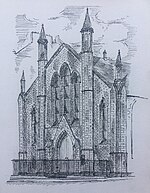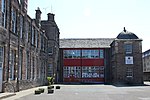Eurovision Young Musicians 2018

The Eurovision Young Musicians 2018 was the 19th edition of the Eurovision Young Musicians contest. It was hosted by the United Kingdom, for the first time since the inaugural contest in 1982. This edition was a co-production between the European Broadcasting Union (EBU), the Edinburgh International Festival and the British Broadcasting Corporation (BBC) as host broadcaster. Musicians representing eighteen countries with EBU membership participated in the contest, with Albania making their debut alongside seven returning countries, while Austria decided not to participate for the first time. The final concert took place at the Usher Hall in Edinburgh on 23 August 2018, with the BBC Scottish Symphony Orchestra under their principal conductor Thomas Dausgaard. It was produced by BBC Cymru Wales for broadcast by BBC Scotland and BBC Radio 3, with Petroc Trelawny and Josie d'Arby being the presenters for the show. Ivan Bessonov of Russia won the contest, marking the country's first win in the competition and the first pianist to win since Poland's Stanisław Drzewiecki in 2000.
Excerpt from the Wikipedia article Eurovision Young Musicians 2018 (License: CC BY-SA 3.0, Authors, Images).Eurovision Young Musicians 2018
Festival Square, City of Edinburgh Tollcross
Geographical coordinates (GPS) Address Nearby Places Show on map
Geographical coordinates (GPS)
| Latitude | Longitude |
|---|---|
| N 55.9464 ° | E -3.2069 ° |
Address
Capital House
Festival Square 2
EH3 9SU City of Edinburgh, Tollcross
Scotland, United Kingdom
Open on Google Maps











